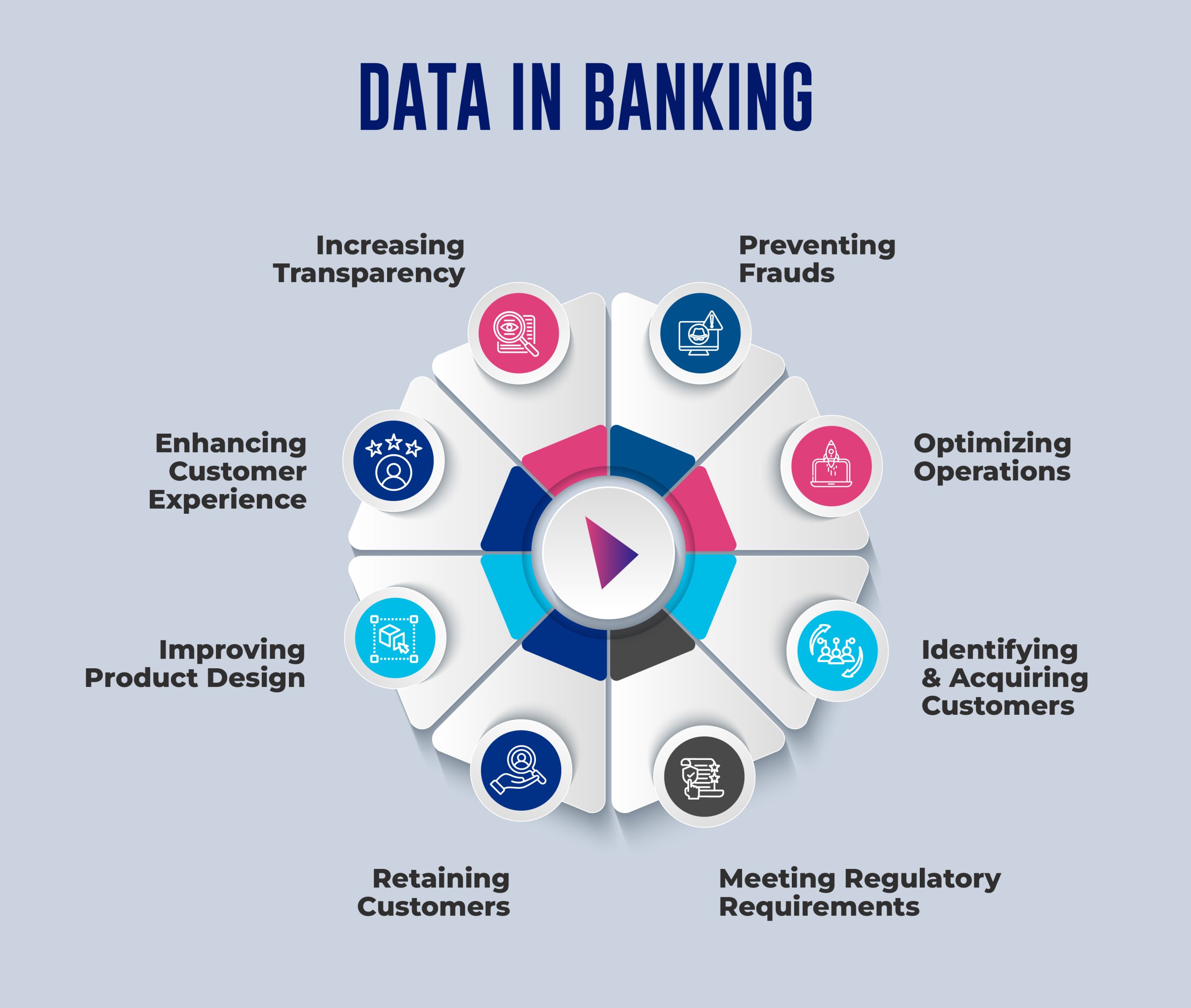In the rapidly evolving landscape of modern banking, digital transformation has emerged as a pivotal force driving innovation, customer engagement, and profitability. The rise of digital-only banks and the integration of cutting-edge technologies have reshaped the industry’s dynamics, offering opportunities and challenges for financial institutions. In this blog post, we discuss five strategic ways banks can leverage data to ensure profitable growth in the digital era, drawing insights from successful examples in the industry.
Enhancing Data in Banking
Partnering with niche BankTech partners like Maveric that offer innovative digital transformation expertise across geographies and vendor ecosystems is a way to stay conversant with the top Datatech banking solutions.

Embracing a Data-Driven Mindset for Banking Transformation Services
Digital banks have a unique advantage in harnessing and analyzing vast data. To illustrate this, let’s consider the success story of Hong Kong’s digital banks. These newcomers have embraced data analytics to distill valuable insights from customer behavior, preferences, and transactions. Adopting a data-driven mindset has personalized their offerings, enhanced customer experience, and driven revenues.
Building the Right Team for Data in Digital Transformation
In the competitive digital banking landscape, assembling the right team is paramount. Traditional banks, FinTech companies, and technology giants each bring unique strengths. A combination of talent from these diverse sectors can create a powerful synergy. Embracing a blend of regulatory awareness from banking professionals and innovation from the technology sector is exemplified by IdeaBank and ING. Their strategic hiring practices have enabled them to navigate the delicate balance between compliance and innovation effectively.
Innovating with Unique Products by leveraging Big Data in Banking
Digital banks can no longer rely solely on traditional offerings to attract customers. They must innovate with unique products tailored to the digital age to stand out and foster sustainable growth. This strategy mirrors the approach of savvy banks like Moven, which developed a pioneering mobile money-management app. By leveraging data analytics, these banks can identify niche markets, create compelling product offerings, and target untapped customer segments.
Navigating Regulations and Security
Balancing innovation with regulatory compliance is a challenge that digital banks must navigate skillfully. Regulatory bodies closely scrutinize digital banks, requiring them to uphold the same standards as their traditional counterparts. A successful approach to this challenge is exemplified by Post Bank, which expanded into nonbanking adjacencies like mobile phone services. By engaging with regulators early in the process, digital banks can demonstrate their commitment to security and compliance while pushing the boundaries of innovation.
Strategic Technology Partnerships
The right technology and partners are critical for building a scalable and flexible digital banking platform. Making in-house or partnering with third-party providers profoundly impacts a bank’s ability to deliver seamless and innovative services. As seen in some institutions, the cautionary tale of legacy systems highlights the importance of strategically embracing technology. By leveraging the expertise of technology partners, digital banks can ensure that their platforms are future-ready and capable of accommodating evolving customer needs.
Trust and Customer-Centricity
In the digital banking ecosystem, trust and customer-centricity are paramount. While cost-cutting is essential, cybersecurity should never be compromised. Customer trust can be easily eroded if data breaches or security lapses occur. Digital banks must prioritize strong cybersecurity measures and robust business continuity plans. The example of ING extending services like accounts-receivable management to SME customers underscores the importance of building trust through personalized, reliable, and secure services.
The Future of Data-Driven Banking
Looking ahead, the future of digital banking promises continued innovation and transformation. As digital banks refine their data-driven strategies, we can anticipate even more personalized customer experiences, seamless integration of financial services into customers’ digital lives, and a proliferation of innovative products. The convergence of ML, AI, blockchain, and data analytics technologies will further shape the industry’s landscape, unlocking new growth, sustainability, and profitability avenues.
Conclusion
The strategic use of data illuminates the journey to profitable digital banking. By embracing a data-driven mindset, building the right teams, innovating with unique products, navigating regulations, forming strategic technology partnerships, and prioritizing trust and customer-centricity, digital banks can succeed in the dynamic digital age. The examples of leading banks and their innovative approaches underscore the transformative power of leveraging data, providing a blueprint for sustained growth and profitability in the evolving banking landscape.
About Maveric Systems
Starting in 2000, Maveric Systems is a niche, domain-led Banking Tech specialist partnering with global banks to solve business challenges through emerging technology. 3000+ tech experts use proven frameworks to empower our customers to navigate a rapidly changing environment, enabling sharper definitions of their goals and measures to achieve them.
Across retail, corporate & wealth management, Maveric accelerates digital transformation through native banking domain expertise, a customer-intimacy-led delivery model, and a vibrant leadership supported by a culture of ownership.
With centers of excellence for Data, Digital, Core Banking, and Quality Engineering, Maveric teams work in 15 countries with regional delivery capabilities in Bangalore, Chennai, Dubai, London, Poland, Riyadh, and Singapore.











